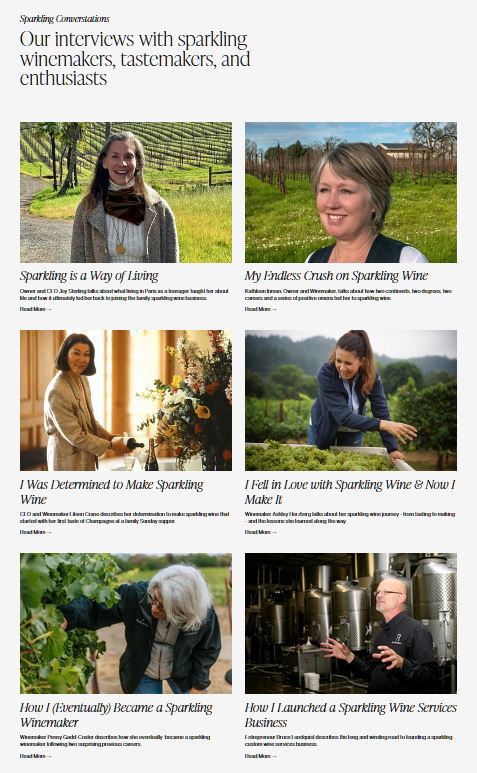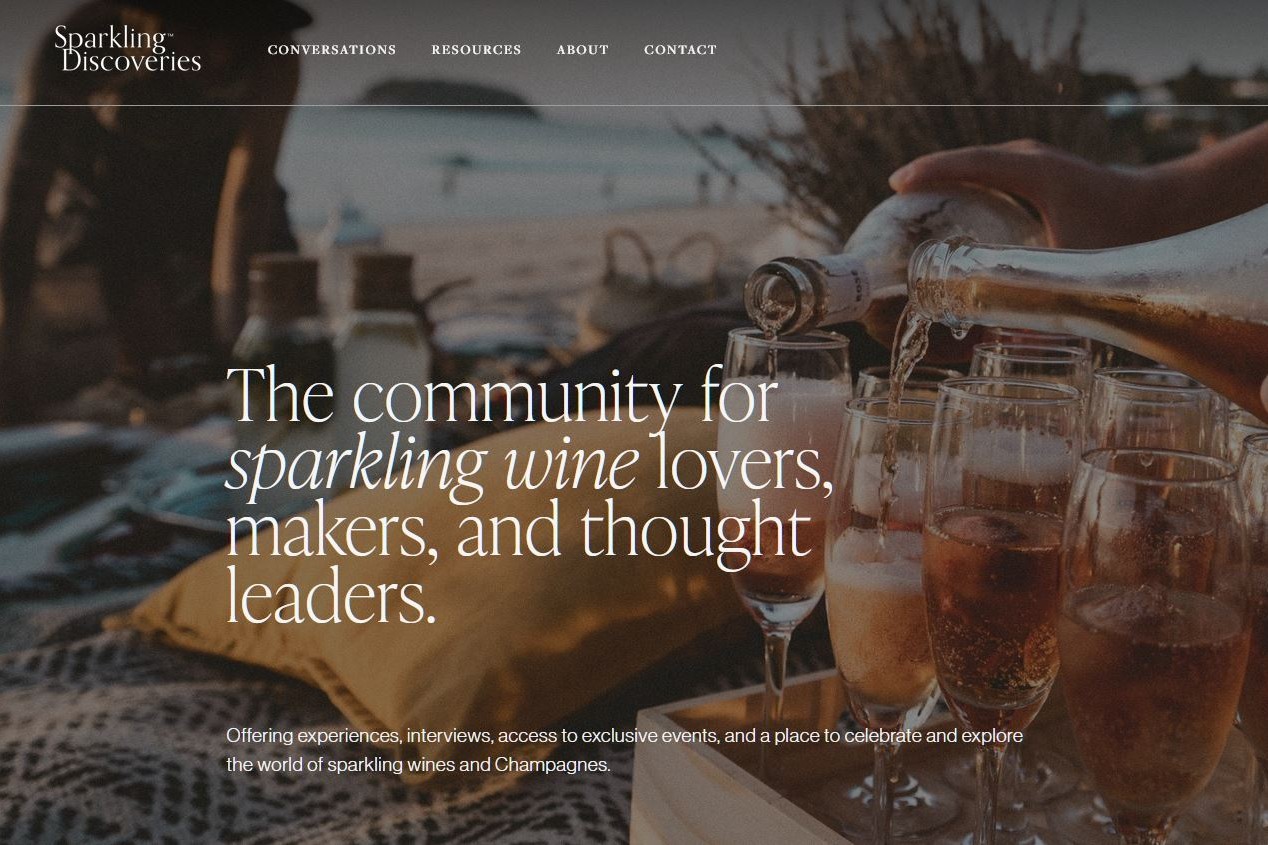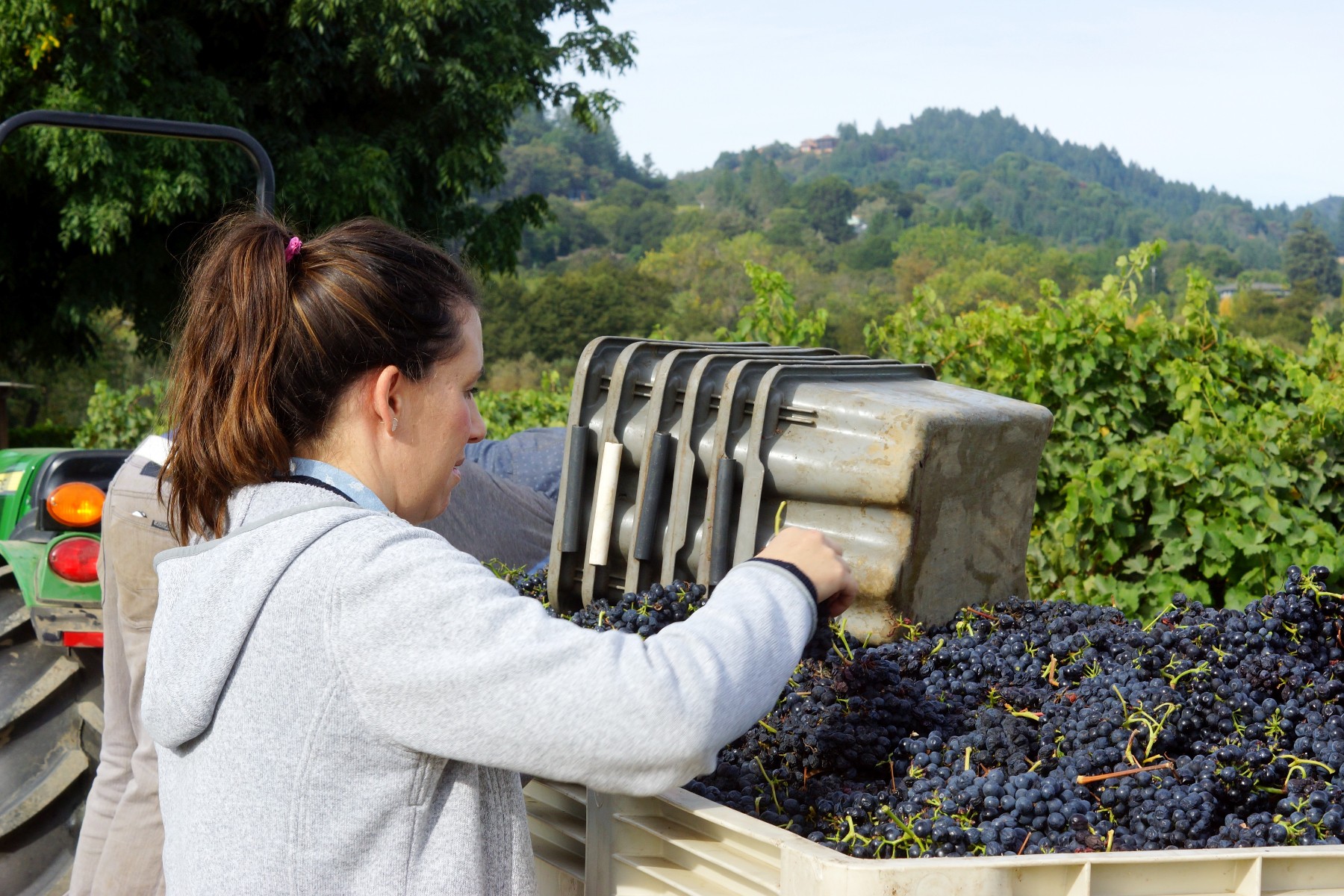Sparkling Moments at Amista Vineyards
What is the Best Amista Wine?
How We Fell in Love with Red Rhône Wines
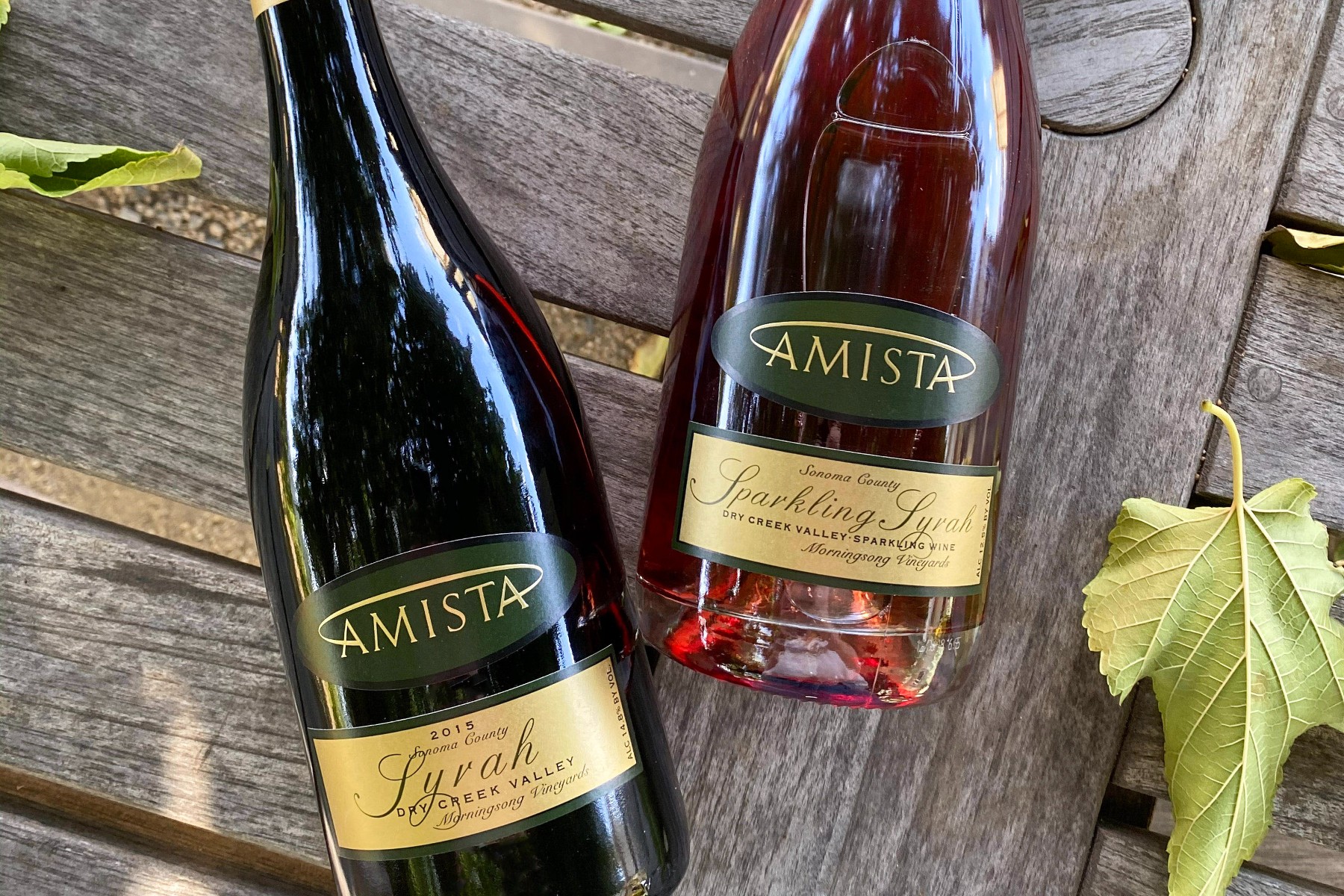
…but why stop at red when you can make sparkling?
The first wine we made from our Healdsburg property was a Rhône variety, namely Syrah. We had just moved to Healdsburg and the Syrah vineyard we planted was only two years old. We’re not really sure why we planted Syrah except it was supposed to be an up-and-coming variety. That was just before the movie Sideways made Pinot Noir famous. Syrah was relegated to the wings while Pinot Noir took over the starring role in the California red wine show.
Garage Syrah
But I digress. Traditionally, the grapes of a two year old vineyard would be dropped on the ground to allow the roots to take hold without the burden of producing a crop. But husband Mike had other ideas. After having made his first wine almost 10 years earlier in our Silicon Valley California home - before our detour to New Jersey and Nevada - he was eager to make wine again. In 2002, he harvested three tons from the young Syrah vines and made wine in our garage with the help of neighbors, family and friends from Munich and Denver. We called it “Garage Syrah”.
The Launch of Amista
This was the wine that seduced us into starting Amista. The Garage Syrah was a hobby wine, made only for personal consumption. But every time we invited friends to come taste from the barrel, they loved the wine and wanted to know if they could buy some once it was bottled. Our friends eventually talked us into making wine for sale and Amista Vineyards was born in 2004.
Even though Syrah has not (yet) become “the hot variety”, we have fallen in love with it. So have our guests and members. We use it in many of our wines and it was the “gateway” grape that got us into Rhône varieties.
We Want More Rhônes!
In 2011 we decided to replace some of the Syrah vines. We were anxious to experiment with other Rhône varieties. Rather than rip out the 11-year-old vines, we used a technique called T-budding, where a T-shaped cut is made and a bud from the new variety is placed in the graft. We grafted about an acre each to Grenache and Mourvèdre. Another advantage of grafting is that you don’t have to wait four years for the vineyards to produce a crop. By the harvest of 2012, the new vines were producing a small amount of fruit and we made our first Grenache and a blend we call Tres, composed of all three of our Rhône grape varieties, Grenache, Syrah and Mourvèdre.
Debut of Our First Rhône Blend
Tres was an instant hit and became Mike’s new favorite. It was the first blend we made on purpose (our dessert style wine was technically our first blend, but it started out as a Zinfandel that would never go dry – a story for another day). A major impetus for doing a blend was winemaker Ashley Herzberg, who had joined us in 2011. Our wines had always been single varietal from a single vineyard. That was what we did. But winemakers love to do blends and Ashley patiently talked us into making a GSM-style blend (Grenache-Syrah-Mourvèdre). Mike was prepared not to like it and it is now his go-to wine.
The Amista Wine Lineup – Focus on Rhônes
We now make four red wines from our estate-grown Rhône grapes: a Syrah, a Grenache and a Mourvèdre, plus Tres, our Rhône-style blend. In addition, we make two Rosés from our Rhônes: Rosé de Tres and Rosé of Grenache.
Why Stop at Red When You Can Make Sparkling?
Becoming the first sparkling winery in Healdsburg wasn’t part of our plan, although to be honest, in those days we didn’t really have a plan. It all started when we made our first sparkling wine in 2008, just five years after our first Amista harvest in 2003. Once again, Syrah was the star of our show.
Our first Rosé was made from Syrah and had become a big hit. In 2007, Chris (our consulting winemaker at the time) asked if he could have some of the current vintage of our Rosé of Syrah to use to teach his class at the junior college how to make a sparkling wine using the classic Methode Champenoise. This is the method used to make fine French Champagne. We immediately said yes, on the condition that we got to try the finished product.
When we tasted it, we knew we had to make more for ourselves and our friends. We sent one barrel each of our 2007 and 2008 Rosé of Syrah, to a custom crush winery specializing in sparkling wines. This is where the second fermentation in the bottle was done, transforming a still wine into a sparkling wine. We released it in 2009 at our first Sparkling Holidays party. Mike celebrated the occasion with what has now become a tradition at this party of opening the bottle with a saber.
Sparkling Wines from Non-Traditional Grapes
Our first sparkling wine was made with a grape that is never used in classic French Champagne, Syrah. Traditionally, Champagne and sparkling wines are made from Chardonnay and Pinot Noir grapes. The Australians make a bubbly called Sparkling Shiraz from the Syrah grape, but it is a very deep red color and slightly sweet. Our Sparkling Syrah is a rosé, glittering cranberry in color and quite dry.
Most of the grapes we grow on our own vineyards are Rhône varieties – Grenache, Syrah and Mourvèdre. Using those grapes rather than the classic Champagne varieties, is one of the ways we innovate. The other non-traditional approach we take is to produce sparkling wines from single vintages. Although we don’t vintage date them, each bottling comes from a single year (except that first Sparkling Syrah). Most Champagnes and sparkling wines are blends from several vintages. We have the luxury of beautiful California weather, so we don’t need to save the “good years” to blend with the bad.
We now have three sparkling wines made from single Rhône grapes: Sparkling Syrah, Sparkling Grenache, Sparkling Mataró (made from 100% Mourvèdre), plus two blends that are made in whole or in part from Rhône varieties: Sparkling Tres and Fusión (a blend of Chardonnay, Grenache and Syrah).
So, what is the best Amista wine? There is no one answer. We have fallen in love with Rhône wines, and we love them all. As a friend is fond of saying, “My favorite Amista wine is the one I have in my glass.”
We invite you to put some in your glass. Come Taste with Us.
Why Grenache in Dry Creek Valley?
It Started with Syrah and Led to More Rhône Varieties
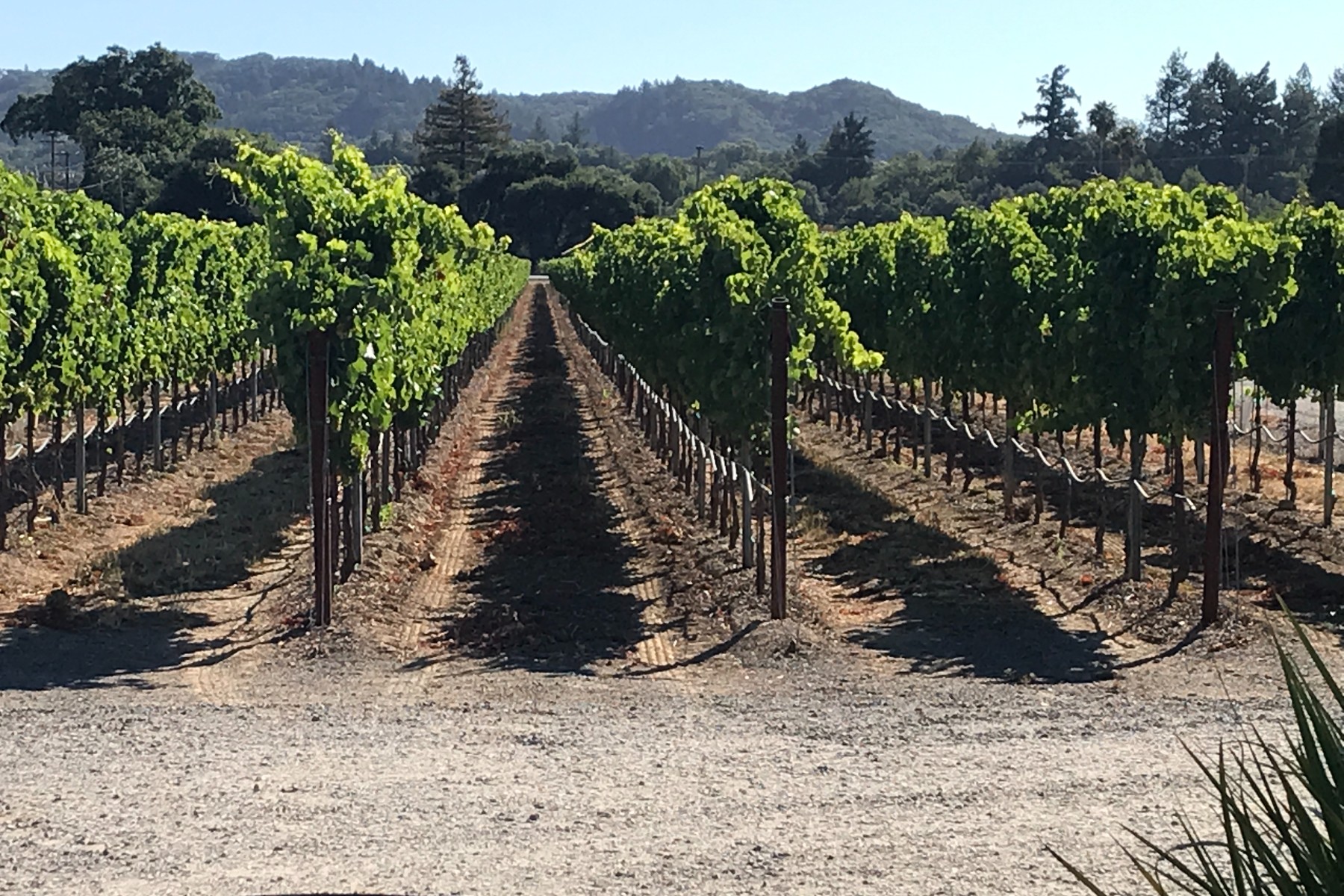
…and now we use Grenache in seven still and sparkling wines!
Planting Syrah, Our First Rhône Variety
The first varietal we planted after we purchased what we came to call Morningsong Vineyards was Syrah. The entire vineyard was planted in Chardonnay when we bought it. Shortly thereafter we killed off the vines in the back of the vineyard. This was not the plan. Unfortunately, we were still living in New Jersey, knew nothing about growing grapes and hired a vineyard manager who wasn’t familiar with our vineyards. It turns out the soil in the back half of the property is very gravelly, being near Dry Creek, and needs more water than the front. It didn’t get enough water, which weakened the vines and made them susceptible to disease.
We had to rip them out. But what should we plant? We drank wine in those days, but our favorites were Cabernet and Zinfandel. We were advised that those varieties were not well suited to the valley floor, where our vineyards are located. Syrah was supposed to be the next hot grape variety at that time, so we planted Syrah. I’m not sure we had ever even tasted a Syrah. Even though Syrah has not (yet) become “the hot variety”, we have fallen in love with it. So have our guests and members. We use it in many of our wines and it was the gateway grape that got us into Rhône varieties.
We Want More Rhônes!
In 2011 we decided to replace some of the Syrah vines. We were anxious to experiment with other Rhône varieties. Rather than rip out the 11-year-old vines, we used a technique called T-budding, where a T-shaped cut is made and a bud from the new variety is placed in the graft. We grafted about an acre each to Grenache and Mourvèdre. Another advantage of grafting is that you don’t have to wait four years for the vineyards to produce a crop. By the harvest of 2012, the new vines were producing a small amount of fruit and we made our first Grenache and a blend we call Tres, composed of all three of our Rhône grape varieties.
Debut of Our First Rhône Blend
Tres was an instant hit and became Mike’s new favorite. It was the first blend we made on purpose (our dessert style wine was technically our first blend, but it started out as a Zinfandel that would never go dry – a story for another day). A major impetus for doing a blend was winemaker Ashley Herzberg, who had joined us in 2011. Our wines had always been single varietal from a single vineyard. That was what we did. But winemakers love to do blends and Ashley patiently talked us into making a GSM-style blend (Grenache-Syrah-Mourvèdre). Mike was prepared not to like it and it is now his go-to wine.
What About Grenache?
The Grenache started out more as a well-kept secret. We didn’t put it in the wine club shipments because we made only 44 cases the first year. It was a lighter body wine than any of the other reds we were making at the time. In fact, we referred to it as our Pinot alternative. For Pinot lovers, Grenache was a welcome discovery. For Mike, who thinks most Pinots are too thin, it wasn’t a wine he was prepared to like.
Mike Discovers Grenache
One night I served it with dinner and much to his surprise, he liked it. After dinner we moved to our chairs to watch TV and have another glass of wine. The bottle was sitting on the table between us, and I noticed Mike pouring himself another glass. A while later, out of the corner of my eye, I saw him reach over, grab my glass and pour my wine into his glass. Do you suppose he thought I had gone to sleep? That’s when I knew that he had made a new friend in Grenache.
Seven Reasons to Love Grenache
Grenache has also become one of the stars of our winemaking program. It became so popular that when we replanted some of the aging Chardonnay vines, we replaced them with Grenache. In addition to making a red Grenache, we now make a Rosé of Grenache and a Sparkling Grenache, and we use it in four blends, Tres, Rosé de Tres, Sparkling Tres and Fusión.
What Foods to Pair With Grenache
Mike has gone from a Grenache skeptic to a fan, and it is frequently the wine he chooses to have with a meal. And speaking of meals, I want to share a recipe for something we had the other night that was perfect with the Grenache. We often have Grenache in the summer, slightly chilled with light dishes – grilled salmon, pastas with fresh picked tomatoes or grilled vegetables. I was delighted that is also paired beautifully with a winter stew that I crave. It’s nothing fancy, just one of those heartwarming, comfort dishes that makes you feel cozy.
Here is my recipe for White Bean Stew with Kale and Crispy Prosciutto
Dog Friendly Wine Tasting Near Healdsburg
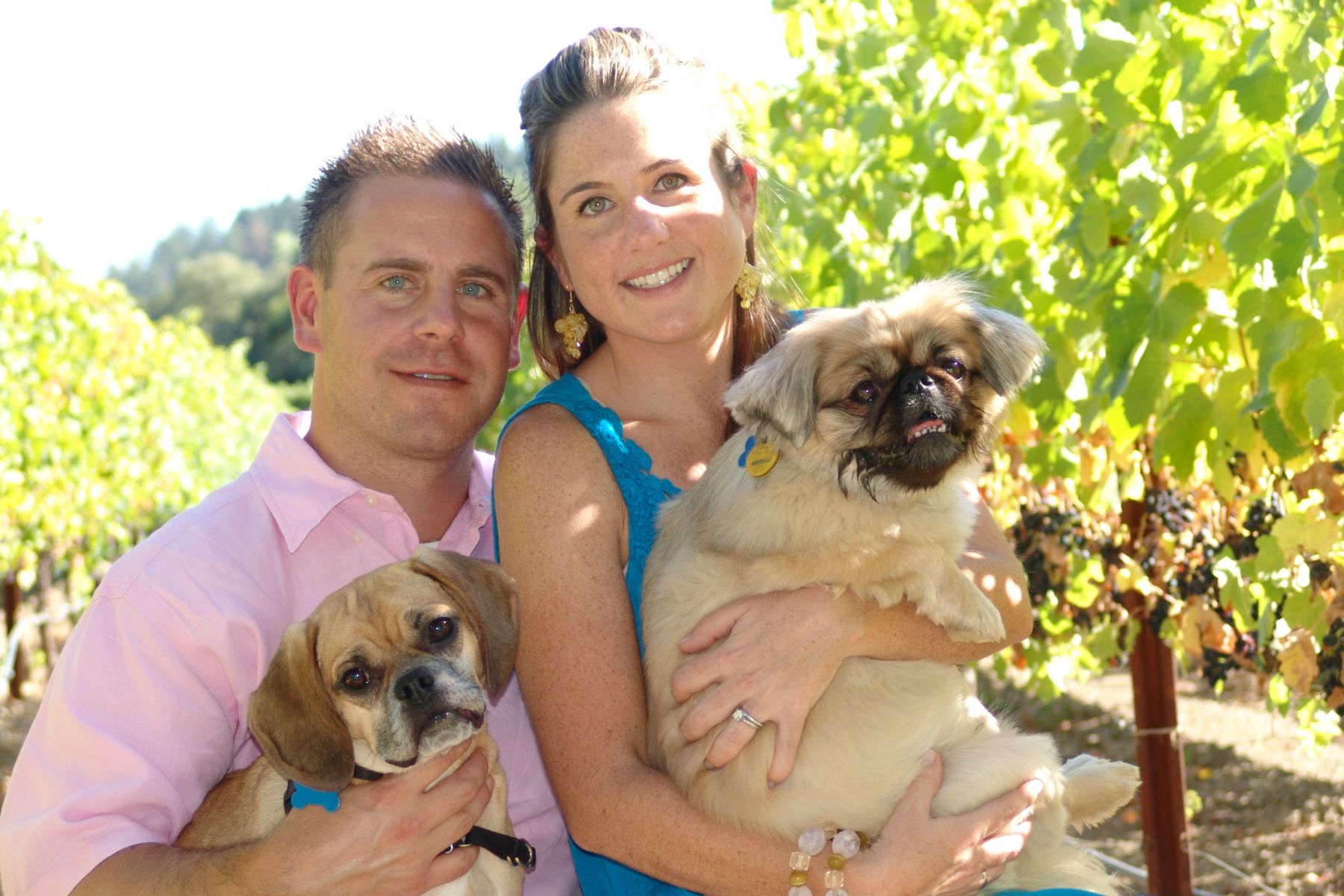
Wow! We are proud to be among so many wineries in Sonoma County who welcome our furry friends. “Finding dog-friendly wineries in these parts isn't all that ruff,” exclaims Dana Rebmann in SFGate. Her article lists dozens of Sonoma wineries that welcome pooches and their pet parents. The article continues, “A slew of Sonoma wineries not only welcome, but look forward to meeting the pampered pooches of their guests.”
Amista Has Always Been Dog Friendly
We have always looked forward to welcoming dogs to Amista, with water bowls sprinkled around the solar covered patio and a jar of treats behind the bar. As owners, we live on the property and love walking our dogs around the vineyard. Torin and Dylan, our two Sheltie males, especially love to make a stop at the tasting room to meet the other dogs who may be visiting. And friendly doesn’t stop at dogs. Amista means “making friends” and we pride ourselves on a warm welcome for each and every one of our guests.
And Amista Has Sparkling Wines!
The description of Amista reads, “Dogs can enjoy the good life at this Healdsburg winery, lounging by their human’s side on the patio. Still and sparkling wine is available for tasting at Amista and reservations are recommended, especially on weekends.” Although there are many dog-friendly wineries on the list, Amista is one of the very few that offers sparkling wine tasting! We love introducing our lineup of estate grown, Methode Champenoise sparkling wines to our guests.
Plus Amista Has Rhône Wines!
All our Rhône wines are grown in the estate vineyards that surround the solar covered patio, where you can sit back, sip and enjoy the views. Although the dogs seem oblivious to it, the humans enjoy the change of pace from the usual Cabernet, Pinot and Zinfandel flights offered at other Sonoma wineries. We have a selection of Rhône varieties, a sensational Rhône blend we call Tres and unique Rhône sparkling wines, along with a more traditional Blanc de Blanc.
But That’s Now All – A Romp in the Vineyard for the Dogs
The dogs surely won’t be oblivious to a walk around the vineyards while their humans partake in a self-guided vineyard tour. Grab a map and stop at each of the signs to learn about the grapes we grow, our commitment to sustainable farming, the habitat project designed to restore the natural environment for the Coho salmon and Steelhead trout in Dry Creek, and the 200-year-old heritage oak tree.
Check out the whole list at "These Sonoma wineries welcome pooches and their pet parents" by Dana Rebmann in SFGate.
And on your next trip to Healdsburg in Sonoma County, we invite you – with or without your best friends – to Taste with Us.
Amista Vineyards Featured on Sonoma Sparkling Wine Tour
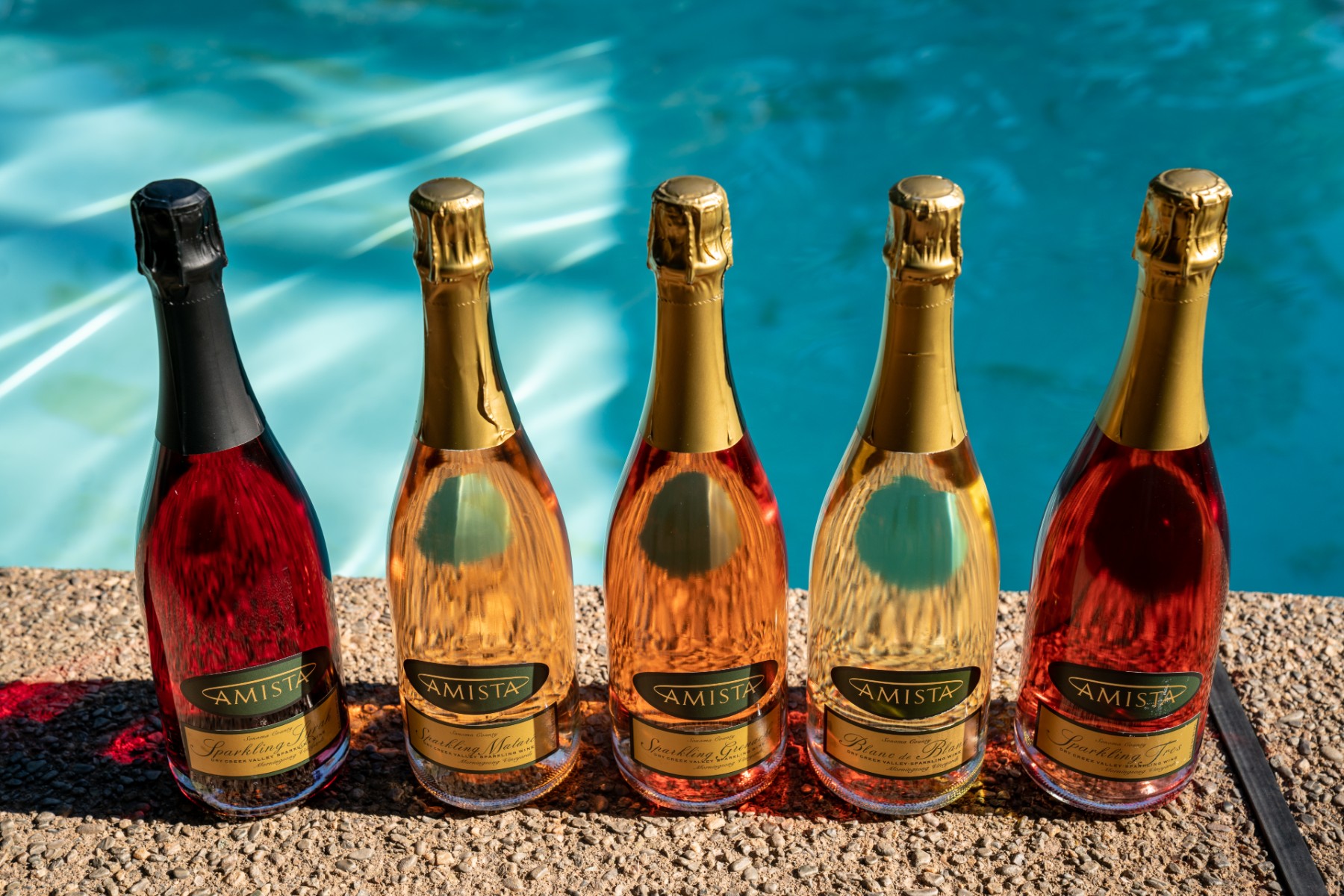
Move Over Champagne – Sonoma County Produces Delightful Sparkling Wines
What is the Difference Between Sparkling Wine and Champagne?
The People Behind the Sparkle
Penny Gadd-Coster, Winemaker, Breathless Wines
Ashley Herzberg, Winemaker, Amista Vineyards
Let's Build a Sparkling Wine Community
Interest in sparkling wine is booming...
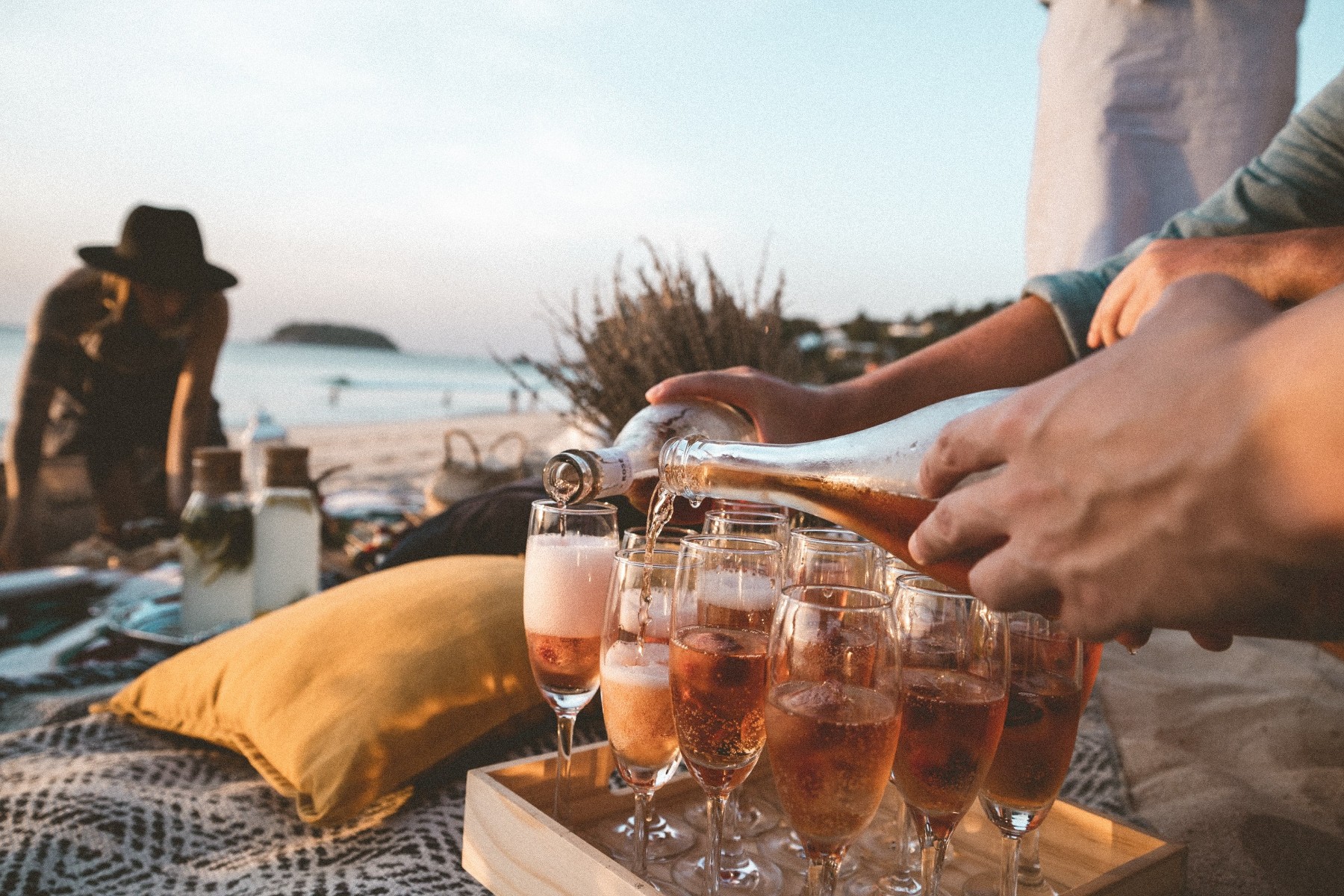
...and the time is right to come together.
Have you heard the news? I am excited about the launch of Sparkling Discoveries, a brand-new community for sparkling wine producers, enthusiasts, and leaders. We went live on Global Champagne Day, which fell on October 28 this year. This is my latest project and like most things in my life, it started as a seed of an idea that germinated, blossomed and grew with the help of friends and colleagues.
I’ve been writing this blog, Sparkling Moments in Wine, for the last several years to answer the frequently asked questions about my experiences as I moved from the corporate world to becoming a winery owner and advocate for sparkling wine.
Learning the Stories of the People Behind Sparkling Wine
Anyone who knows me, knows I love bubbles, but I am equally fascinated to discover how others got involved and the twists and turns in their journeys. Sparkling Discoveries started as an idea to tell the stories of those people. Initially I was thinking of winemakers and owners of sparkling wine houses in Sonoma County.
It's a Sparkling Wine Boom!
As I kicked around the idea with friends and colleagues, we realized that we are experiencing a sparkling wine boom, made up not only of those who make sparkling wine, but other thought leaders and enthusiasts. And it isn’t just happening in Sonoma County. There are fascinating stories from all over the country and all over the world.
Let's Build a SparklingWine Community
This needed to be something more than a blog. We decided we wanted to build a sparkling community. And it needed to go beyond Sonoma County. We also realized there is no single site dedicated to sparkling wine that is brand neutral, providing information and resources on everything from what’s happening in the world of sparkling, to how it’s made and what foods pair with different kinds of sparkling wines.
So, we created a section called Sparkling 101 with some basics on the difference between Champagne and sparkling wine, how and where sparkling wines are made, and different styles and types of sparkling wines. As we get questions and ideas, we’ll add more resources. In the future we’ll add sections on wine and food pairings and events.
We are also inviting sparkling wine lovers, wine professionals, and the community at large to nominate those who are making an impact on the growth, promotion, and future of sparkling wine. Nominees can be winemakers, marketers, social media influencers, hospitality workers, winery owners, and beyond. The nomination period will be open through December 31, 2022, and individuals nominated will be celebrated online, through social media channels, a promotional campaign, and a signature event in 2023.
We’re building a community one sparkling wine enthusiast at a time. We already have nominees from Napa, the Finger Lakes region of New York, Michigan, Oregon, Paso Robles, Sacramento, Healdsburg, and a U.S. based family member representing a grower Champagne house in France.
Fascinating Stories from the People of Sparkling Wine
The centerpiece of the platform is Sparkling Conversations, in-depth profiles of sparkling wine makers, thought leaders and advocates. I’ve had the privilege to tell some remarkable stories - all different, all fascinating.
Owner and CEO Joy Sterling, Iron Horse Vineyards, talks about what living in Paris as a teenager taught her about life and how it ultimately led her back to joining the family sparkling wine business. She revealed her inspirations - from the creation of unique bottlings of sparkling wine, to her favorite food pairings to the way she leads her team.
Entrepreneur Bruce Lundquist, co-founder of Rack & Riddle, describes the long and winding road to founding a sparkling custom wine services business and recounts the lessons he learned in his career and what he hopes his six kids learned from his experience.
Winemaker Penny Gadd-Coster of Rack & Riddle, Breathless Wines and Pénélope Wines, describes how she eventually became a sparkling winemaker following two surprising previous careers, her unique approach to sparkling winemaking, her favorite pairings and the best and worst moments in her sparkling career.
Our own Amista Vineyards Winemaker Ashley Herzberg reveals her goals for making sparkling wines, how she hopes people will feel when they pop the cork and her fascination with grower Champagnes, including the ones she has in her fridge right now.
Kathleen Inman, Owner and Winemaker of Inman Family Wines, talks about how two continents, two degrees, two careers and a series of positive omens led her to sparkling wine.
Retired CEO and Winemaker Eileen Crane of Domaine Carneros describes her determination to make sparkling wine that started with her first taste of Champagne at a family Sunday supper and her happiest moments - the best pairings with sparkling wine, open book management and the most rewarding time in her career.
If you love sparkling wine, we invite you to join us. Here are some options:
- Check out the Sparkling Discoveries website
- Subscribe to our news
- Nominate someone who is making an impact on sparkling wine
- Contact us with your questions, feedback and ideas
And next time you’re in Healdsburg, come Taste With Us and explore the sparkling wines of Amista Vineyards.
Amista Featured Among 7 Gorgeous Fall Color Hikes in Sonoma Wine Country
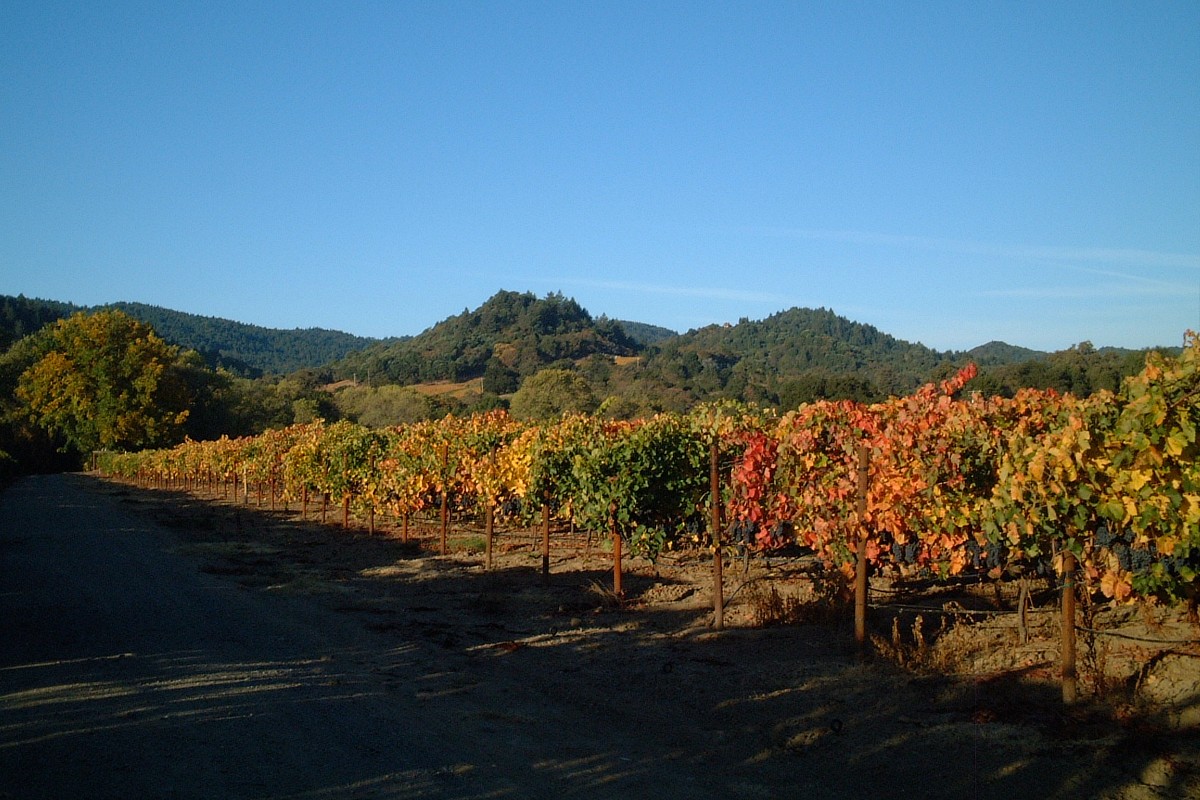
Thanks, Sonoma Magazine, for including our Vineyard Adventure walk in your list of gorgeous fall color hikes. It truly is the most glorious time of year to be in the vineyards – crisp fall air and a spectacular array of colors on the vines, from bright yellow to deep rust.
A Lively Pairing - A Vineyard Hike and Wine Tasting
“Cooler temps and colorful foliage make autumn a great time of year for hitting the trails. In Sonoma County, you can reward yourself with a glass of wine after your hike,” explains Dana Rebman. She goes on to showcase 10 wonderful hikes across Sonoma County.
A Vineyard Adventure Walk Near Healdsburg
We especially want to invite you to visit Amista Vineyards in the heart of Dry Creek Valley. Afterwards, treat yourself to a tasting of our estate grown Rhône or sparkling wines on our solar covered patio. You’ll be surrounded by same vines you just saw on your walk.
Amista’s Vineyard Adventure Features our Habitat Enhancement Project
Did you know that Amista, in partnership with the Sonoma County Winegrowers, created a vineyard walk that showcases the Habitat Enhancement Project designed to restore the natural fish habitat in Dry Creek? The flat half-mile stroll around our estate vineyards includes signs that educate walkers about the wines we make and describes the flora and fauna on the property, including the 200-year-old Heritage Oak Tree. The walk is complimentary for all, including dogs on leash and children. This is something fun for the whole family.
Read “7 Gorgeous Fall Color Hikes in Sonoma Wine Country” by Dana Rebman in Sonoma Magazine.
We would love to welcome you to Amista Vineyards in any season. Come Taste with Us.
3 Sonoma Sparklers I Love This Holiday Season - Amista Blanc de Blanc
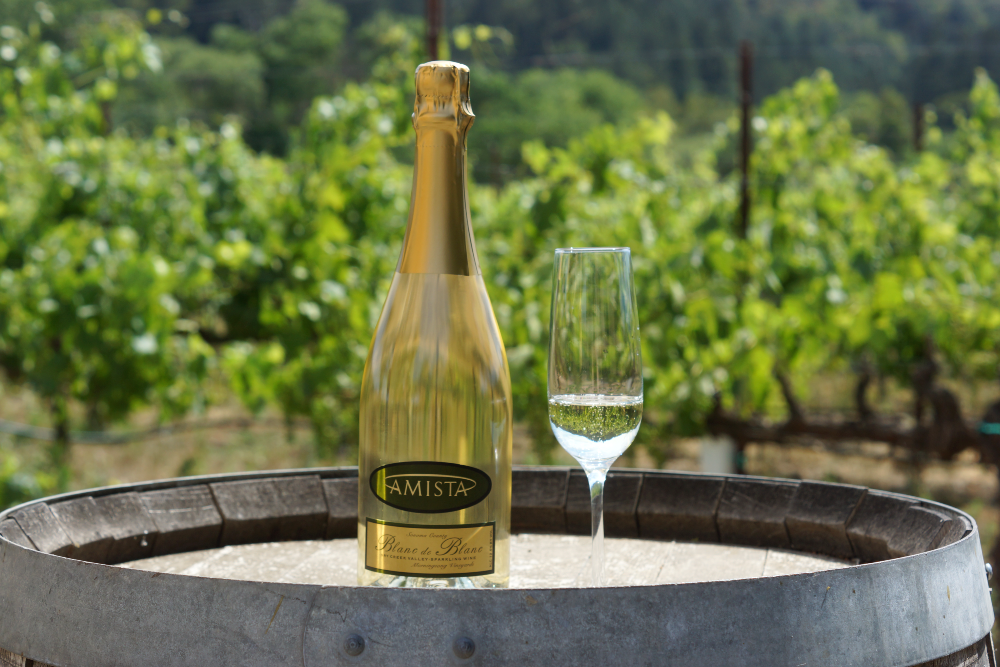
Still Thirsty?
Amista Made Its First Sparkling at Rack & Riddle in 2008
Making Sparkling Wine Feasible for a Small Winery Like Amista
Ashley Herzberg, Amista winemaker, creates our wines according to her vision using the equipment and facilities at Rack and Riddle. They make it viable for a small producer like Amista to craft sparkling wines. It is almost impossible for a small winery to make the huge investment in capital equipment – from highly automated bottling, riddling and disgorging to hundreds of tanks – required to make sparkling wines using the traditional method, the same way they are made in Champagne.
Two Winemakers, Similar Paths from Medicine to Wine
Sparkling Syrah A Ghoulishly Good Halloween Pairing
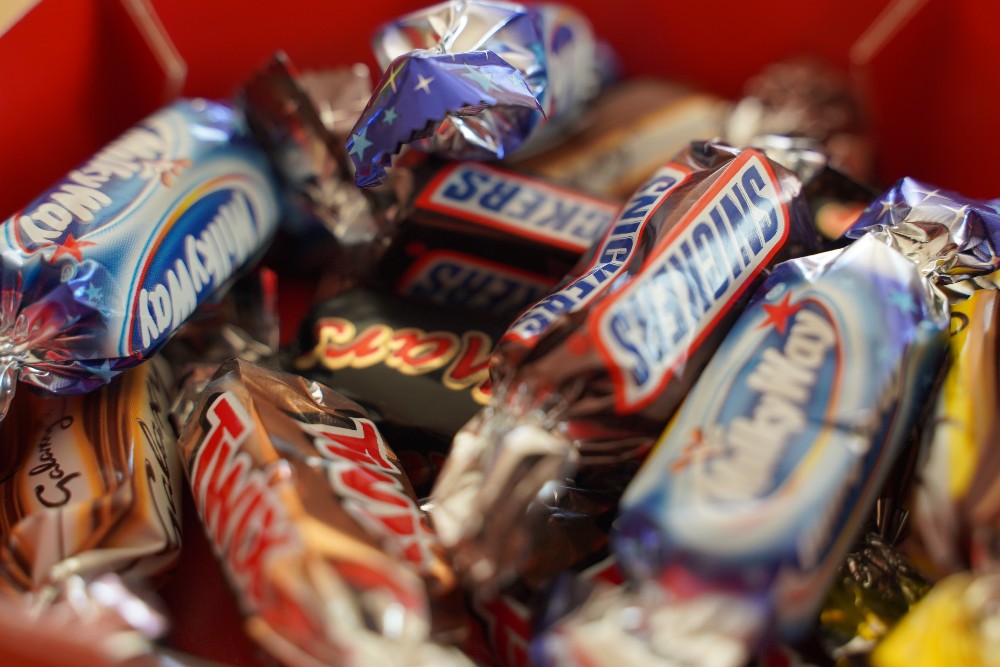
Devin Parr published an article in Wine Country titled The Best Wines to Pair with Your Halloween Candy. Who would have thought that our Sparkling Syrah would pair with Smarties. Devin explains, “These sweet-tart tubes of tiny candy disks are a true Halloween staple. Those little bites have a sweet and fruity flavor profile and a uniquely chalky finish, perfect for pairing with a glass of crisp, cold, sparkling wine.”
If Smarties are not your thing, there are several other recommended pairings such as Twizzlers and Grenache, Starburst with Rosé or Milky Way with Cabernet. It may sound frivolous to pair wine with candy, but Devin holds a certification in wine expertise from the Apicius International School of Hospitality in Florence, Italy, as well as the Wine and Spirit Education Trust (WSET) Diploma, so she knows what she’s doing.
In addition, trying different wines with a wide array of foods – even Halloween candy - is the best way to discover what flavors work with different varieties of wine. It is also the kind of practice that cements various flavors in your mind so you can identify them later.
Our winemaker, Ashley Herzberg, says a mentor once told her to write down everything she tastes and make notes to describe it. Doing this repeatedly creates the memories that allow you to identify even the most unusual flavors.
If on the other hand, you don’t especially care if you can identify a vast array of flavors, you may want to simply plan a Halloween wine tasting party. You can impress your friends with this unique spin on wine tasting and Devin’s article provides the perfect shopping list.
Amista Vineyards Launches Sparkling Discoveries, A Landmark Sparkling Wine Community
Wine Business Monthly today announced the launch of Sparkling Discoveries, an online community for sparkling wine lovers, makers and thought leaders. The press release goes on to explain that “the community aims to be the first brand-agnostic informational resource and hub for all things sparkling wine, including news, interviews and maker profiles, events, education, and more. Appropriately, the platform will officially launch on Global Champagne Day, this year falling on October 28, 2022.”
Conversations with the People Behind the Sparkle
We are beyond excited about this launch. Our goal with Sparkling Discoveries is to create a brand-agnostic resource about all things sparkling wine. The centerpiece of the platform shines a light on the amazing people involved in sparkling wine, both in Sonoma County and beyond, by bringing their stories to life with in-depth interviews. Sonoma sparkling icons like Joy Sterling, Proprietor of Iron Horse Vineyards, Eileen Crane, retired founding winemaker and CEO of Domaine Carneros and Penny Gadd-Coster, of Rack and Riddle and Breathless Wines, are a few of the people featured in the initial launch of the platform.
Not surprisingly, Amista Winemaker Ashley Herzberg is among those featured and reveals how she fell in love with sparkling wine, making her first "grower sparkling wine", the bubblies she has in her refrigerator right now and what she hopes her children learn from her work as a winemaker.
Inviting Nominations for Sparkling Stars
Do you know someone we should feature? Nominate them for Sparkling Discoveries and help us build the community.
Concurrent with the launch of the new platform, Sparkling Discoveries is introducing a campaign focused on the trailblazers within the sparkling wine industry. The “Sparkling Stars” program invites sparkling wine lovers, wine professionals, and the community at large to nominate those who are making an impact on the growth, promotion, and future of sparkling wine. Nominations will be open until December 31, which marks National Champagne Day.
Sparkling 101 – All You Need to Know About Sparkling Wine
Sparkling Discoveries will also feature a “Sparkling 101” section with articles and guides on various topics pertaining to sparkling wine, such as the difference between Champagne and sparkling wine, Methode Champenoise defined and dosage basics. The goal is for Sparkling Discoveries to become THE definitive resource for the sparkling wine community.
We have big plans for Sparkling Discoveries, which is the first resource of its kind. We look forward to bringing the exciting world of sparkling wine to life for those in the industry as well as wine lovers who want to dig deeper into what this celebrated beverage is all about.
Winemaker Ashley Herzberg Discovers Sparkling Wine
I Fell in Love with Sparkling Wine & Now I Make It!
This year marks winemaker Ashley Herzberg’s 12th harvest at Amista Vineyards. She has been a sparkling wine trailblazer! She was the first to make a “grower sparkling wine” in Dry Creek Valley.
At the time, most sparkling wines in California were made by large producers with grapes purchased from multiple vineyards in the tradition of Champagne. In France, grower Champagne has become the rage in the last two decades with small, family-owned houses making Champagne from their own grapes.
Grower Champagnes are treasured because they are limited and hard to find. People love to discover hidden gems! And that’s what Ashley is making right here in Sonoma County.
We had a conversation recently about her sparkling discoveries.
How I First Discovered Sparkling Wine
Vicky
I know you love Champagne and sparkling wines. I’m curious to know what first drew you to sparkling.
Ashley
I actually really didn't like sparkling wine at first. My parents are the ones who introduced me to wine, and they didn't drink a lot of sparkling wine. My only exposure was to really bad sparkling!
I didn't know what was possible in the world of sparkling. I don't know what the exact catalyst or the exact wine was, but I think it was a Champagne and I realized how complex it could be. It can be toasty and yeasty, fruit driven and acidic. It can be so many things all in one glass and I just loved it.
Vicky
So, the first time you finally had a good sparkling wine, you fell in love?
Ashley
The very first time! Before that I thought very sweet sparkling wines were the only things that were available. Even when I was a child, I did not have a sweet tooth. I had an aversion to sugar. The only thing I knew was sparkling wine is sweet. And it's gross. It's not good wine.
“The only thing I knew was sparkling wine is sweet. And it's gross. It's not good wine.”
And then discovering that there was this whole other world, was so exciting. I realized there’s so much to learn about sparkling wine and so many wines to try. And there are so many different varietals you can use to make it.
Making My First Grower Sparkling Wine
Vicky
Clearly you developed a fascination with trying sparkling wines but when you joined us in as our winemaker in 2011, you had not yet made a sparkling wine. Did you even know we made a sparkling wine?
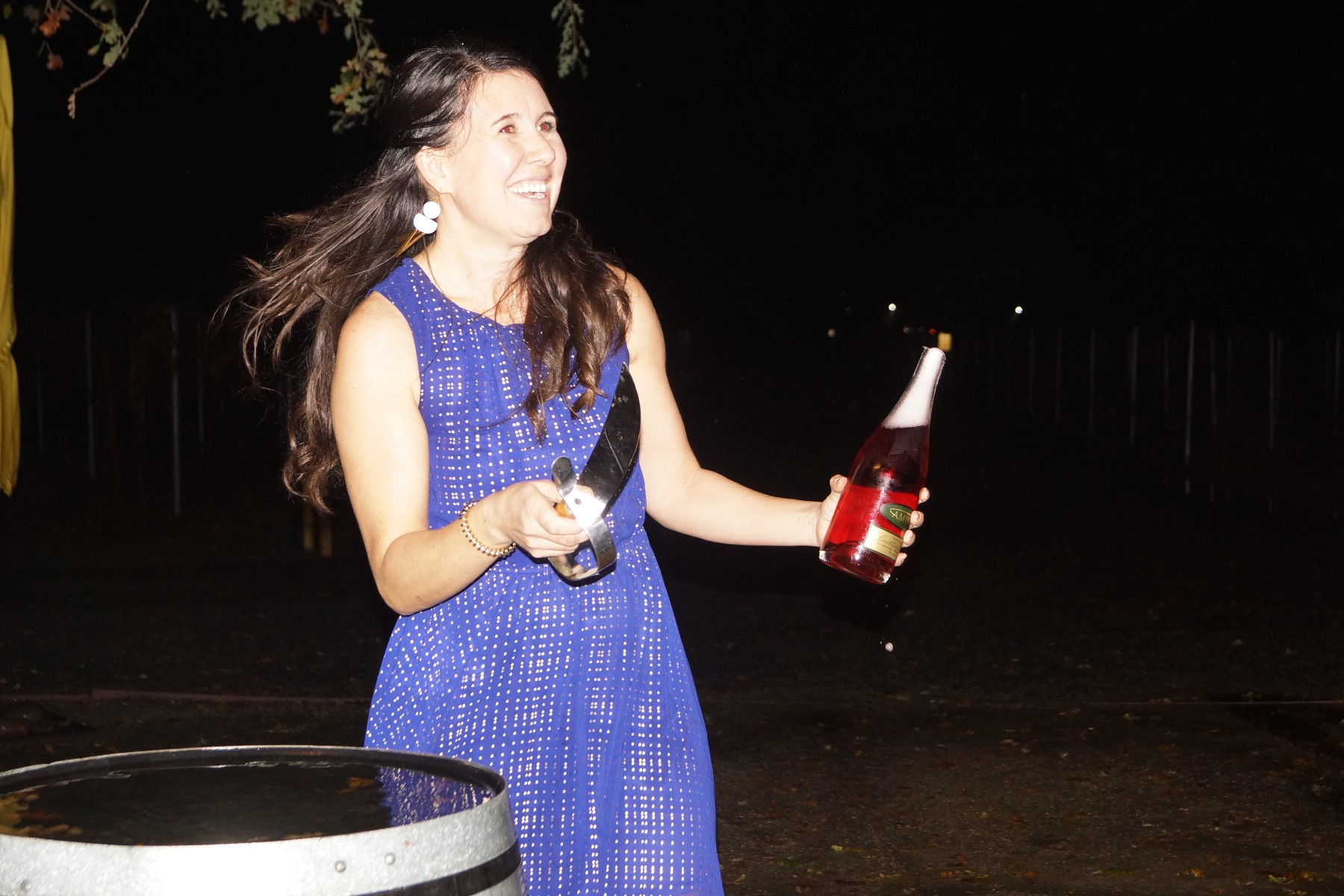 Ashley Herzberg Performing a Sabrage on a Bottle of Sparkling Wine
Ashley Herzberg Performing a Sabrage on a Bottle of Sparkling Wine
Ashley
Yes, because Mike (co-founder of Amista) had given me a couple bottles of your Sparkling Syrah as a Christmas gift. I assumed it was going to be sweet. I said to myself, “I’m not drinking that.” Many months later I pulled it out for my girlfriends, and they loved it. I had my first taste and was so excited.
Then two years passed between me tasting your sparkling before I came to you and said I wanted to work with you as your winemaker. In that time, I had already begun my exploration of sparkling wines and realized how much I loved them.
“The challenge and excitement of making a sparkling wine was enticing.”
I wanted to work with you because I had familiarity with your still wines. But the challenge and excitement of making a sparkling wine was enticing.
Lessons I Learned About Making Sparkling Wine
Vicky
Aside from being a lover of sparkling, I know you are also a lover of learning. What would you say are your biggest lessons learned about making sparkling wine?
Ashley
When I made that first sparkling wine, I knew how to pick for still wines, but I was so worried about when to pick for sparkling wines. How do you maintain the acidity and not have too high a sugar level? Penny (Gadd-Coster, consulting winemaker) at Rack and Riddle said, “you just still pick for flavors. You're shifting what you're looking for in those flavors. But you're still picking for flavors.” And I was like, oh, OK, I know how to do that!
Vicky
OK, so learning how to pick the grapes for sparkling wine was a big lesson learned. What else?
Ashley
Since I was starting from scratch on making sparkling wine, I didn't have any base of knowledge, so everything was something new to be learned. Penny was very important, especially that first year.
She was a ball of wisdom. Little things would come up in conversation. Penny had this very chill attitude about it, the way I had come to feel about making still wines. What I learned is that it’s just winemaking.
People say, ‘I’ve never made sparkling, and I wouldn’t know where to start. It’s so different than making still wine.” But it’s not. If you know how to make wine, you can make sparkling wine. Yes, there are some different processes for sparkling, but it is basically just the same as making still wines. That was really helpful to learn - you're just making wine.
